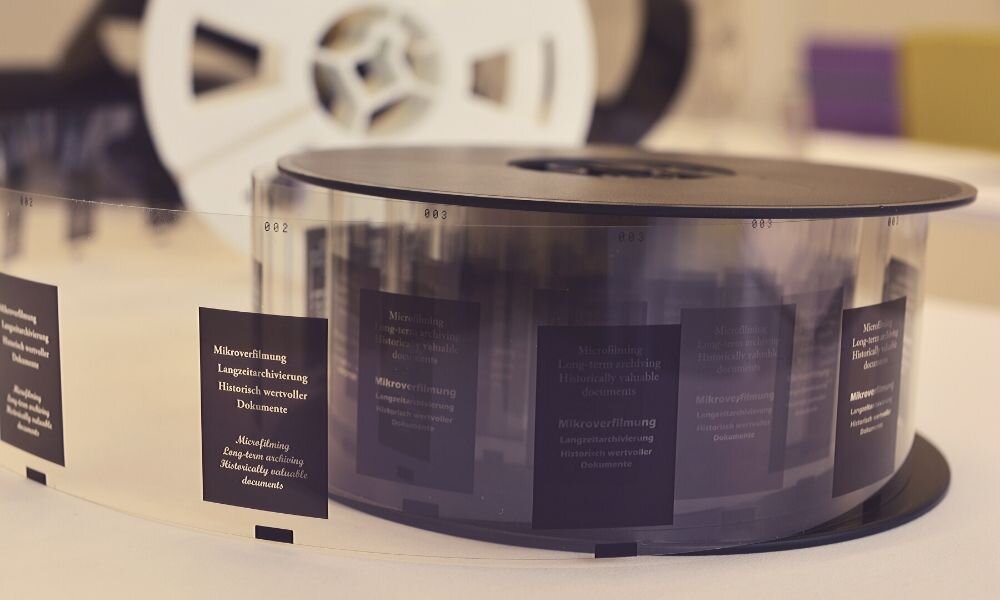Different Types of Microfiche and Microfilm
The technology used to store and access documents has evolved many times throughout history. Though now outdated, microforms were once a very popular method for transmitting, storing, and viewing film and print documents. The two most common forms of media used for microform machines were microfiche and microfilm. Though these methods have since fallen out of use, the documents they carry often still hold great significance today. As such, many people have taken to microfiche and microfilm conversion to digitize their documents and preserve them for the future generation. This guide to the different types of microfiche and microfilm explores the intricacies of each medium and their most common formats.
Microfiche
Of the different types of microfiche and microfilm film, microfiche is more widely known. A microfiche is a small, flat sheet of film, typically 105 x 148 mm, that contains a matrix of micro images. These images are generally 10 x 14 mm in size and can adopt a portrait or landscape orientation style. A single microfiche can hold roughly 98 images per fiche and requires a microfiche reader for proper viewing.
The most common types of microfiche are jacket microfiche and COM fiche. Jacket microfiche store slightly larger micro-images, typically either 16mm or 35mm. Jacket microfiche is significantly larger than other microfiche, standing at roughly 4 x 6 inches, and can hold up to five strips of film at once. Images held on a jacket microfiche generally hold similar content and a title strip area is usually listed at the top of the jacket to indicate the contents within. COM fiche, on the other hand, is much smaller but can hold a much larger quantity of images. A computer processor generates and arranges COM fiche, or computer output microfilm fiche, in a permanent grid pattern. COM fiche typically possesses a higher reduction ratio than other types of microfiche and can accommodate a larger output of frames per fiche.
Microfilm
Unlike microfiche, which one can store in a flat sheet a film, microfilm occupies on an open reel of film or cassette. Microfilm is unperforated and contains photographed pages of documents, rather than computer-generated productions of a document, as one does with COM fiche. In general, microfilm images are in 16mm or 35mm formats, though the length of the film reel will vary depending on which format size you use. Microfilm can store a higher quantity of images than microfiche and can generally store several hundred images.

